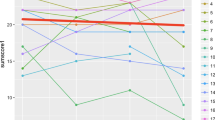Abstract
This paper reports on an action research case study. The project involved nine classroom teachers using the action research process to develop an integrated curriculum algorithm and software classification system. The project also aimed to empower individual teachers with the knowledge, skill and confidence to understand, improve and transform their teaching procedures and practices with respect to the use of computers in primary classrooms. The discussion focuses on the development of the algorithm and the selection of a suite of software for the investigation of integrated curriculum topics. Also discussed is the impact of this type of instructional strategy on student and teacher motivation and performance. Also the lessons learnt in regard to software development, professional development, and the effectiveness of action research as a change agent.
Chapter PDF
Similar content being viewed by others
Keywords
- Classroom Teacher
- Action Research Project
- Action Research Process
- Primary Classroom
- Action Research Cycle
These keywords were added by machine and not by the authors. This process is experimental and the keywords may be updated as the learning algorithm improves.
References
Ministry of Education, Schools Division, Victoria. (1988; The School Curriculum and Organisation Framework. Ministry of Education, Victoria, Melbourne, Chapter one.
Mathews, B.J. (1985) Learning Through an Integrated Curriculum... Curriculum Branch, Ministry of Education (Schools Division), Victoria, Melbourne.
Print, M. (1991) Curriculum Development and Design, 2nd edn. Allen and Unwin, Nth Sydney, pp. 61–62.
Romeo, G.I. (1991) Computers and the Primary Language Curriculum: An Action Research Project, in 9th Australian Computers in Education Conference Proceedings, ACEC Gold Coast, Queensland, p. 19.
Richards. T., Richards, L., McGalliard, J. and Sharrock, B. (1992) Nudist 2.3 (computer software) Replee Pty Ltd in association with La Traobe University, Melbourne.
Dalton, J. (1985) Adventures in Thinking. Nelson, Melbourne, Section one.
Dalton, J. and Smith, D. (1986) Extending Children’s Special Abilities. Department of School Education, Victoria, Melbourne, Chapter three.
Crawford, J. (ed) (1991) Units of Work for Levels P-8. Directorate of School Education, Victoria, Melbourne, Chapter one.
Crawford, J. (ed) (1991) Achieving Excellence... Directorate of School Education, Victoria, Melbourne, Chapter one.
Ministry of Education, Schools Division, Victoria. (1988) The School Curriculum and Organisation Framework. Ministry of Education, Victoria, Melbourne, p. 20.
Department of Employment, Education and Training (DEET) (1988) Teachers Learning: Improving Australian schools through Inservice Teacher Training and Development. Australian Government Publishing Service, Canberra, p. 23 ff.
Author information
Authors and Affiliations
Editor information
Editors and Affiliations
Rights and permissions
Copyright information
© 1995 Springer Science+Business Media Dordrecht
About this chapter
Cite this chapter
Romeo, G. (1995). Computers and the primary curriculum: an action research case study. In: Tinsley, J.D., van Weert, T.J. (eds) World Conference on Computers in Education VI. WCCE 1995. IFIP — The International Federation for Information Processing. Springer, Boston, MA. https://doi.org/10.1007/978-0-387-34844-5_64
Download citation
DOI: https://doi.org/10.1007/978-0-387-34844-5_64
Publisher Name: Springer, Boston, MA
Print ISBN: 978-1-4899-1714-0
Online ISBN: 978-0-387-34844-5
eBook Packages: Springer Book Archive




